GearBeer
Well-Known Member
This project was inspired by Bobby_M's Counterflow Chiller Tutorial.
Bobby's design is an example of a shell and tube heat exchanger. My main problem with the design is that the shell and tube (hose and refrigeration copper) are both pliable and, thus, subject to the effects of gravity. The resulting contact between the tube and the shell reduces the efficiency of the heat exchanger. My solution is to use 1/4" hard copper tubing inside 1/2" hard copper tubing.
I ran some computations based on this design, the excel sheet can be found here. These calculations determined the necessary chiller length to be 5.32 feet with the output water temperature at 96.8 degrees Fahrenheit. To ensure the temperature drops enough the design I'm making is significantly longer than 5.32 feet.
Assumptions and Notes: I took the starting temperature of the wort as boiling and the finishing as 70 degrees. The starting temperature of the water was determined using my brew thermometer in a bucket with water flowing into it. The water flow rate was also determined experimentally. The wort flow rate was assumed at 1 gallon/min. These calculations assume 100% efficiency and no fouling, so are not representative of real world function.
Here's a basic schematic of the design I whipped up in paint. The wort is traveling through the small tube in the center and the water through the shell. The small red arrow is wort in, the small blue arrow is wort out. Similarly, the large blue arrow is water in and the large red arrow is water out.
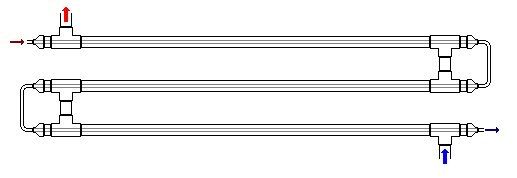
The end designs are identical to Bobby's (except he's a much better solderer than I am). They do have to be drilled out to so the 1/4" copper can be put through.
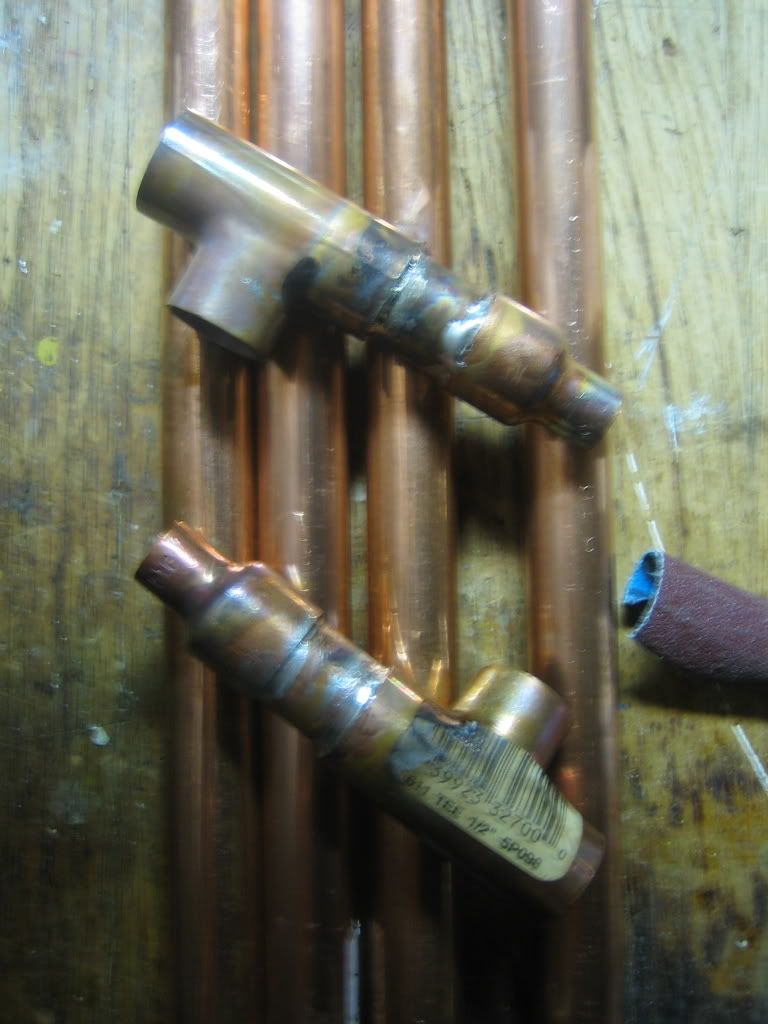
I ordered the 1/4" copper tubing in 10' lengths from McMaster. They were about $14 + shipping. The 1/2" copper came from Lowe's. If you can find 1/4" hard copper tubing locally more power to ya, but all my local plumbing places had discontinued it.
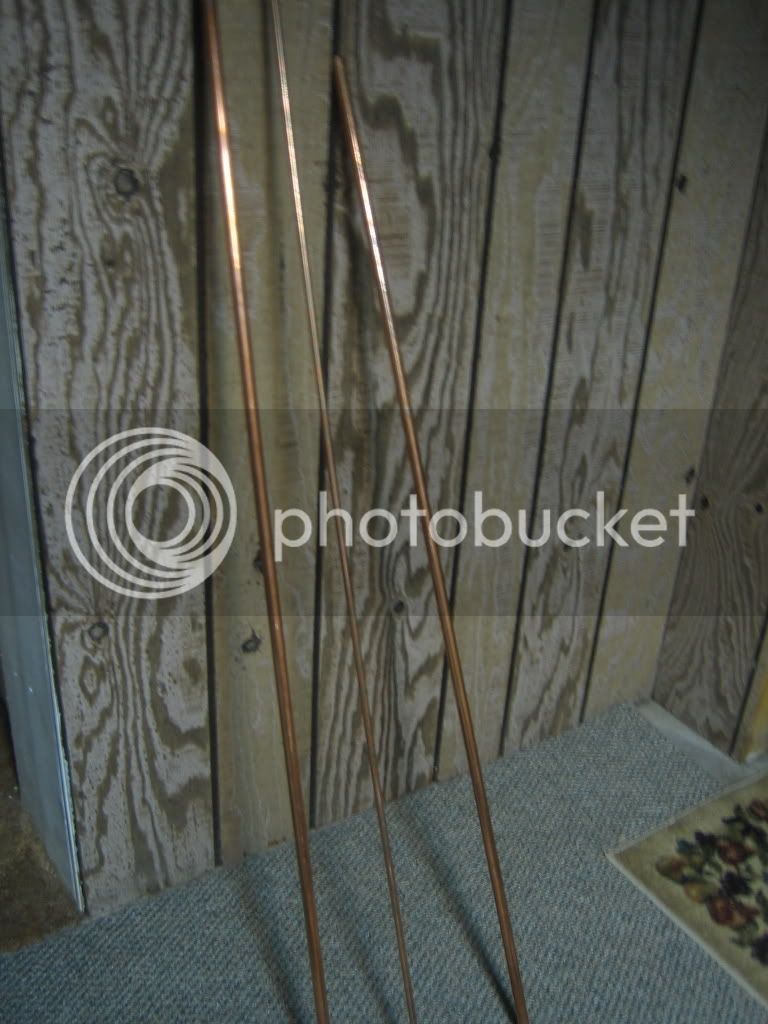
I cut the 1/4" copper tubing into 5' lengths and the 1/2" copper into 53" lengths. This leaves 3/4" on either end to attach the loops that take the wort to the next exchanger.
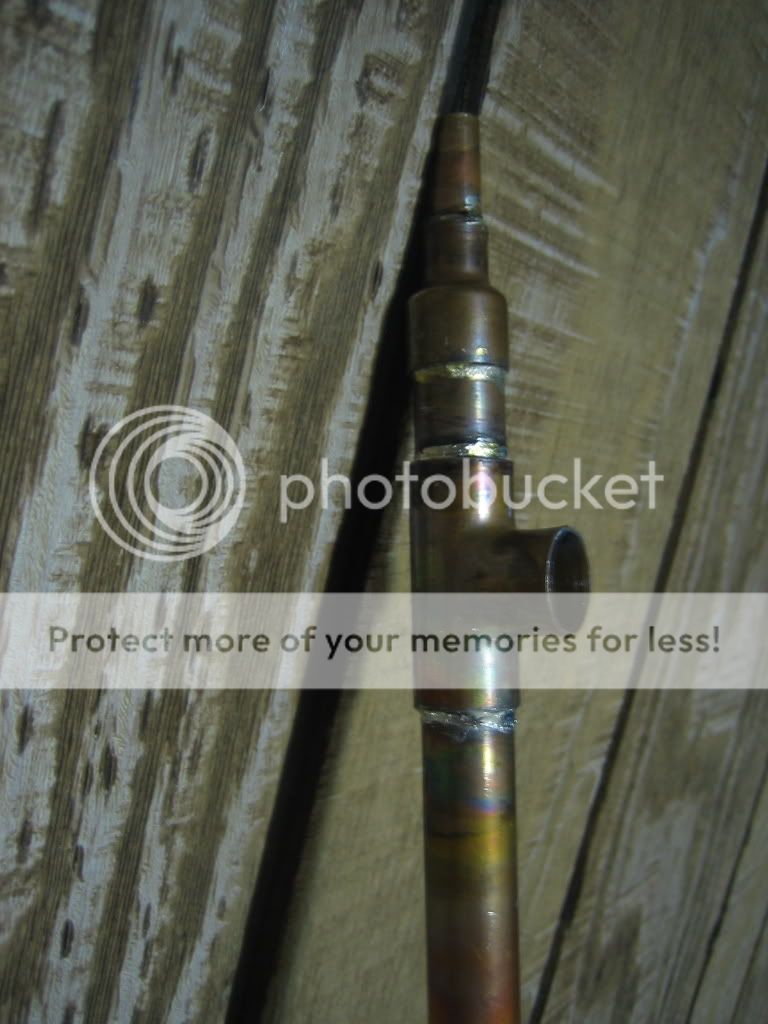
I'll post a BOM when I've finished the project, since the parts I need keep changing.
This design will be somewhat large but my intent is to mount it on my (eventual) brewstand.
Bobby's design is an example of a shell and tube heat exchanger. My main problem with the design is that the shell and tube (hose and refrigeration copper) are both pliable and, thus, subject to the effects of gravity. The resulting contact between the tube and the shell reduces the efficiency of the heat exchanger. My solution is to use 1/4" hard copper tubing inside 1/2" hard copper tubing.
I ran some computations based on this design, the excel sheet can be found here. These calculations determined the necessary chiller length to be 5.32 feet with the output water temperature at 96.8 degrees Fahrenheit. To ensure the temperature drops enough the design I'm making is significantly longer than 5.32 feet.
Assumptions and Notes: I took the starting temperature of the wort as boiling and the finishing as 70 degrees. The starting temperature of the water was determined using my brew thermometer in a bucket with water flowing into it. The water flow rate was also determined experimentally. The wort flow rate was assumed at 1 gallon/min. These calculations assume 100% efficiency and no fouling, so are not representative of real world function.
Here's a basic schematic of the design I whipped up in paint. The wort is traveling through the small tube in the center and the water through the shell. The small red arrow is wort in, the small blue arrow is wort out. Similarly, the large blue arrow is water in and the large red arrow is water out.

The end designs are identical to Bobby's (except he's a much better solderer than I am). They do have to be drilled out to so the 1/4" copper can be put through.

I ordered the 1/4" copper tubing in 10' lengths from McMaster. They were about $14 + shipping. The 1/2" copper came from Lowe's. If you can find 1/4" hard copper tubing locally more power to ya, but all my local plumbing places had discontinued it.

I cut the 1/4" copper tubing into 5' lengths and the 1/2" copper into 53" lengths. This leaves 3/4" on either end to attach the loops that take the wort to the next exchanger.

I'll post a BOM when I've finished the project, since the parts I need keep changing.
This design will be somewhat large but my intent is to mount it on my (eventual) brewstand.


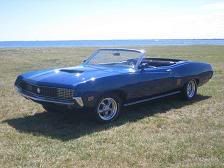

 IMO.
IMO.

